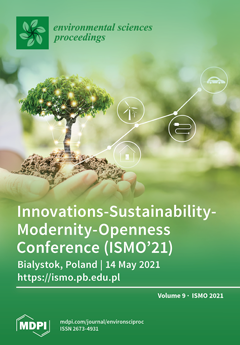The building sector has the responsibility of being a generator of high carbon emissions, due to inefficient energy consumption in the last decades. For the European Union (EU) and the building sector, this pollution has generated a great impact and concern, establishing objectives
[...] Read more.
The building sector has the responsibility of being a generator of high carbon emissions, due to inefficient energy consumption in the last decades. For the European Union (EU) and the building sector, this pollution has generated a great impact and concern, establishing objectives in sustainability and energy efficiency in the short term. The EU, committed to energy sustainability, has established several guidelines, aiming at reducing carbon emissions. For this reason, European directives have been published to increase energy efficiency and sustainability in buildings, with EPBD 2018/844/EU being the most up-to-date regulation. This directive mainly focuses on reducing carbon emissions and increasing the efficiency of energy systems in buildings, but it also refers to the importance of establishing indoor air quality indices and smart management of ventilation systems. Before this directive was published, many of the implemented ventilation strategies did not consider the indoor air quality (IAQ) in their scope of established comfort parameters. Therefore, this study analyses the performance of the ventilation system, controlled smartly to cover the demand and the established IAQ rates via CO
2 ppm, through renewable geothermal energy systems. This study has been carried out at the LUCIA building, a near Zero Energy Building (nZEB), which belongs to the University of Valladolid, Spain. This building stands out for being one of the most sustainable buildings in the world, according to LEED certification, ranking as the most sustainable building in the northern hemisphere. This building to study is equipped with cutting-edge energy systems, with zero carbon emissions. Several parameters have been analysed (air speed, enthalpy, air flow, temperature, humidity, kWh, climate data, etc.) enabling an energy optimisation of the combined systems. All the monitoring data obtained by the smart management have been analysed, providing favourable outcomes, due to the establishment of IAQ levels, according to the EPBD 2018/844/EU. After this study, the smart management of ventilation combined with removable geothermal energy can be exported as a strategy to reach the established IAQ levels through zero carbon systems.
Full article



